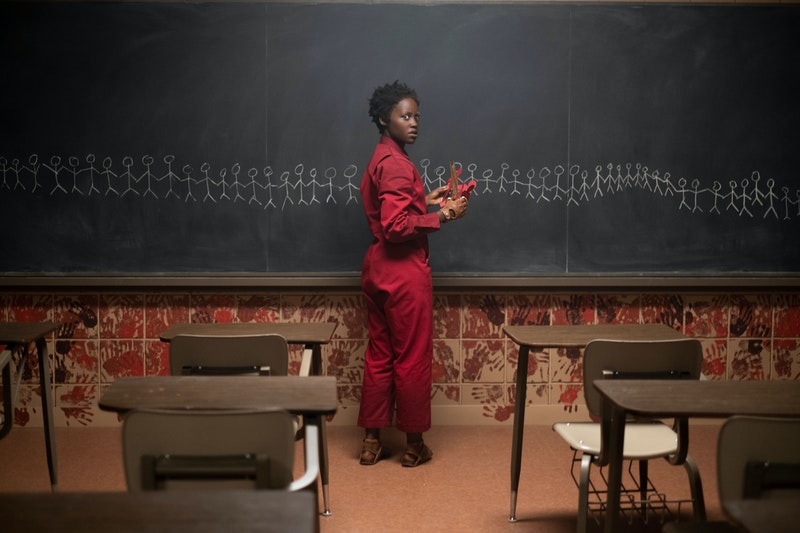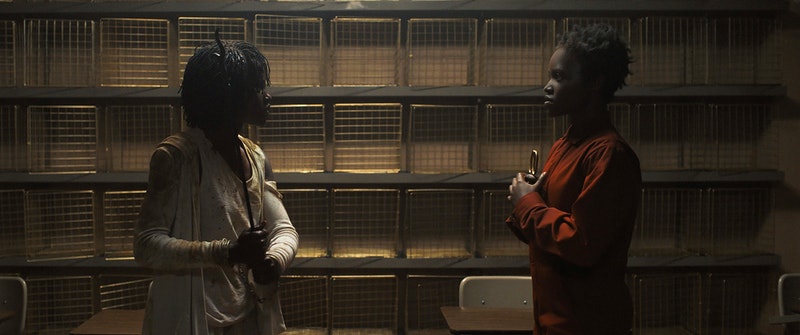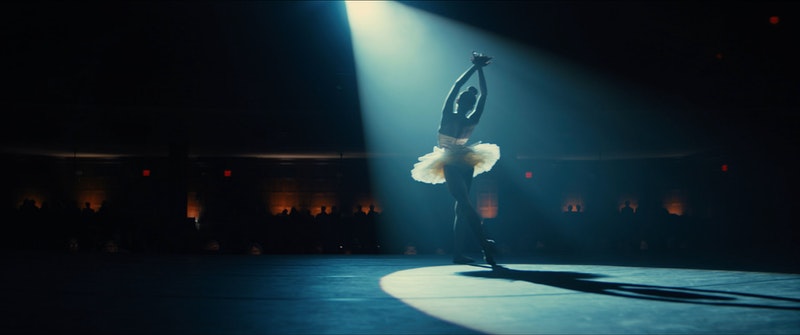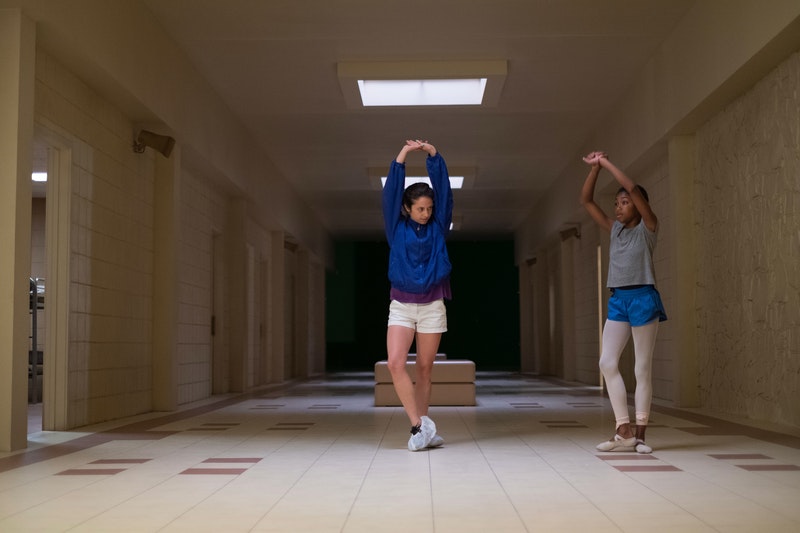
Lupita Nyong'o as Adelaide Wilson doppelgänger Red in Us, written, produced, and directed by Jordan Peele. Photo: Claudette Barius/Universal Pictures.
Seemingly out of nowhere, the underclass rises up to seize power. There is widespread pandemonium. As the old world order crumbles, there is a sense that nothing can ever be the same again. What sounds like news coverage of summer 2020 is actually the plot of Us (2019), directed by Jordan Peele. A year after the film’s release, it stands as a brilliant work of horror starring Lupita Nyong’o as Adelaide, who is forced to confront the most terrifying thing of all… herself. Jordan Peele has been on the screen for years now, having risen to comedy super stardom alongside Keegan-Michael Key in the sketch comedy show, Key and Peele. It wasn’t until the smash horror-thriller-comedy Get Out (2017), however, that Peele became widely recognized for his writing and directing skills. The first distinctive cinematic aspect of Peele’s films is his casting: the lead roles aren’t played by white men, a choice Peele has said he plans to continue. While Peele transcends the conventions of casting representation, he also expands the boundaries of the horror genre. Us takes horror to new heights by focusing on the power of movement to effectively intensify feelings of fear.
Peele collaborated with artist Madeline Hollander to develop the movement for the film. Hollander, a multi-disciplinary artist, is a 2019 Whitney Biennial participant and professional choreographer, whose works include MILE (2016) and Arena (2017). For Us, Hollander provided in-depth instructions on how the characters could physicalize their personalities, the combination of which makes for a grade-A terrifying film. What’s so amazing about the particularities of the characters’ movement personalities is that Nyong’o and family also have to embody their doppelgangers or “Tethers.” In the case of Nyong’o, playing both Adelaide and her Tether Red, the range of her movement styles creates incredible character contrast throughout the film. The difference intensifies at the climax of the film, however, because the conflict is depicted through dance.

Adelaide Wilson (Lupita Nyong’o) and her doppelgänger Red (Lupita Nyong’o) in Us, written, produced, and directed by Jordan Peele. Photo: Industrial Light & Magic/Universal Pictures.
Adelaide confronts Red in the underground passageways described at the opening of the film as one of the thousands of mysterious tunnels beneath the United States in which the Tethers live. In true evil genius fashion, Red finally explains her plan by revealing that the Tethers are essentially clones of the humans above ground but were created without a soul and left trapped below ground. All of this changed, however, when Adelaide and Red began dancing, an event Red punctuates by ripping apart two paper dolls. It was in that moment when the two danced independently, together, that their tether broke apart and Red developed her special ability to move autonomously. Separated as teenagers, Red and Adelaide grew further apart into adulthood.
We see the difference between the two movement styles most pronounced in the final fight scene, which is strikingly spliced with dance solos. Here, Us pushes the envelope of horror by unveiling, through movement, two deeply hidden societal fears. The first: the Tethers are exact replicas of the humans, except they lack a soul, and this translates into their movement aesthetically. In the Nutcracker pas de deux that frames the final fight scene, we are shown a dance recital performed simultaneously by Adelaide and Red in their respective realms. Danced by Ashley McKoy, young Adelaide’s conventional Balanchine solo directly contrasts young Red’s distorted version choreographed by Hollander. The result is a hybridized, but recognizable, Nutcracker duet that sets the young dancers in supportive opposition. Young Adelaide’s movement is elongated, stretching through her arms and legs to provide a sense of weightlessness and elevation. Young Red, however, never elevates on her toes; her arms and legs bent, she remains grounded through her feet. While young Adelaide’s jetés and battements elegantly slice into the air, gravity anchors Red’s body to the earth, where she contorts against the wall and crawls along the ground. Her movement originates from her core and lower back, providing a more internal orientation. What’s more, the pas de deux emphasizes the embodied aesthetics through the use of the stage space. Young Adelaide’s movement takes place for the most part in centerstage. Illuminated by the spotlight, young Adelaide moves through an abundance of space, articulating an unfettered transcendence, perhaps even a soul. Young Red, by contrast, makes use primarily of the floor and wall, straining against surfaces that resist her expansion. In the final fight scene, the rapid contrast between the young dueling, yet partnering, ballerinas comments on movement with, and without, a “soul.”

Ashley McKoy as teen Adelaide in Us, written, produced and directed by Jordan Peele. Photo: Universal Pictures.
Yet, in Red’s account of her plan to Adelaide, she doesn’t claim to want a soul. She claims simply to want her time, which is another pronounced aesthetic in the final fight scene. In the film’s present moment, Adelaide and Red are literally dueling to the death, and their fighting styles continue the commentary from the pas de deux. Adelaide’s reach is still full and extended, but directly in combat with Red’s quick precision strikes, the soulfulness translates as sloppiness. Adelaide is overextended; she stumbles and lunges, unable to keep up with the efficiency of Red’s rigid maneuvers. It is during this fight that “taking one’s time” accumulates additional layers of meaning through movement. Taking one’s time means that one has time to take, to enact leisure at the expense of someone else’s impatience. As Julius B. Fleming, Jr., a scholar of Performance Studies and Black Literature writes in his 2019 article, “Transforming Geographies of Black Time,” time has served as a “violent structure” used to oppress Black people throughout United States’s history. By forcing Black people to wait, therefore forgoing their demands for justice and equality, white power structures invoked time as a violent structure of oppression. It is time that Red wants to reclaim, having been forced to wait for so long underground. The Tethers, by overthrowing the humans above, reclaim the leisure to move fully, without constraint on time or space.
At the conclusion of the film, the Tethers take their space. Though Red is slain, the movement she began continues, and the Tethers join hands across America. Just before the zoom out and fade to black, Adelaide has a flashback that reveals she may have been a Tethered all along. The ambiguous ending creates room for interpretation about the precise meaning of Us, and that’s a good thing, according to Peele. Ambiguity disrupts our desire to draw a single, concrete, and thus, reducible, interpretation from the film’s plot, but it enhances our ability to dwell on the lingering effects. The brilliance of Us is that the movie manages to provoke a sense of deep and profound horror, and it does so by gesturing toward our current socio-political climate through its artistic and aesthetic innovation.

Choreographer Madeline Hollander and Ashley McKoy on the set of Us, written, produced, and directed by Jordan Peele. Photo: Claudette Barius/Universal Pictures.
The fear of the mimetic, soulless Other has exploded with other movies like Ex Machina (2014) and Annihilation (2018), and Peele takes that personal fear and scales it up across America. Where Peele really pushes the horror genre forward is his use of movement to articulate an aesthetic of time that is both eerily familiar and persistently haunting. As the world faces down impending global social, political, and ecological crises, Us reminds us that time is running out.